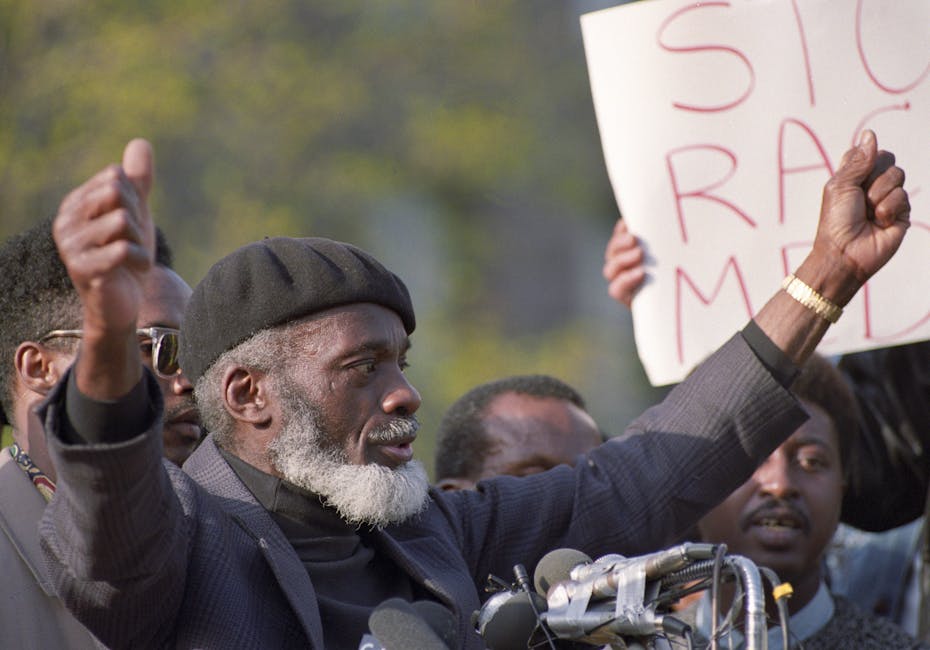
THE CANADIAN PRESS/Colin Perkel
The global call to address systemic racism following the police murder of George Floyd resulted in a push for diversity hires.
In Canada, organizations signed pledges and created strategies to combat racism and discrimination. I call this moment and the waves of performative actions and virtue signaling that ensued, the Negro-Apocalypse.
Of course, representation matters and the business case for diversity is strong. However, recent studies caution that representation without structural changes to office culture, including creating platforms for underrepresented decision-makers, can lead to an “add diversity and stir” approach that is counterproductive.
As institutions continue to push diversity and cluster hires, they can reinforce the negativity of tokenism: “the practice of doing something …only to prevent criticism and give the appearance that people are being treated fairly.”
The ‘only ones’
But strategies, pledges and action plans matter. We need to start somewhere, if not, we will go nowhere. However, we must be cautious if such representation becomes a vehicle to create workplace tokens, or what leading Canadian race scholar Debra Thompson calls the “only one.”
Institutions seek to control, gaslight and manipulate these “only ones” who are often the singular Black, Indigenous or racialized person in a system designed to exclude and marginalize their existence and self-worth.

(Unsplash)
The current cohort of “militant millennials,” who are (re)awakened to Black empowerment, are challenging these institutional behaviours. They are tired of being told to be patient and buy into “the process of adapting well in the face of adversity, trauma, tragedy, threats or significant sources of stress.” In other words, they are tired of the rhetoric of resilience.
The anti-racism protests in 2020 destabilized our national identity as a “post-racial society” in a new way. But of course, these are not new challenges.
Decades of racist patterns
Decades earlier, in 1984, Roy McMurtry, the former Attorney General of Ontario, warned of the dangers of disproportionate unemployment rates for non-white youth. He said:
“if thousands of racial minority individuals in this country are given reason to believe that they face perpetual, widespread unemployment and second-class status because of the colour of their skin, very serious social unrest could result.”
Unrest due to systemic racism had already occurred in Canada before McMurty’s prediction. For example, in 1969, hundreds of students at Sir George Williams University locked themselves into a room at the university to protest what they called discriminatory grading practices.
According to Rodney John, one of the protesters, nothing improved and the result for student protesters was tragic: careers were truncated, families were disrupted and students were beaten by the police because students had “the temerity to raise concerns.”
On May 4, 1992, the Yonge Street uprising occurred. It started as a protest against anti-Black racism in policing that was in part spurred by the police murder of Raymond Lawrence, a 22-year-old Black youth from Peel.
It began as a peaceful protest organized by the Black Action Defence Committee, but the pent up frustration and trauma of centuries of anti-Black racism, acutely felt by Black youth in violent and fatal encounters by the police, led to an outright rebellion in downtown Toronto.

The Canadian Press/Hans Deryk
One of the key legacies of the protest was the creation of the Special Investigations Unit and the Report of the Advisor on Race Relations, more commonly known as the Stephen Lewis Report.
Solutions for all, not for one
Many of the recent Black-focused initiatives are necessary because of historical, ideological and political Canadian-made fears of Blackness. Yet however tangible these solutions are, they also seem ephemeral and superficial. They mask the foundational root causes of systemic racism and in so doing, they reinforce historical divisions and oppression.
The policy-driven support of multiculturalism in 1971, which followed the official de-racialization of Canadian immigration policy in 1962, did not solve systemic racism. Nor did the implementation of the points-based system in 1967; the Charter of Rights and Freedoms of 1982; the Multiculturalism Act of 1988; or Ontario’s Anti-Racism Act of 2017.
These are all examples of governments working towards appeasing Canadian race relations. They were tenants of a neo-liberal and settler colonial system that provided the illusion of systemic change that relied on the notion of “Black Excellence” and individual social mobility.
The issues we need to address transcend the individual. We can no longer tell the token “only one” to wait and be resilient. We must turn our focus to the systemic oppression embedded within our institutions and come to grips with historical racism and discrimination.
We must learn from the impotence of performative actions, how legislation and policy were designed to appease and not fix, and collectively decide what kind of society we want to live in.
![]()
Christopher Stuart Taylor, Associate Vice-President, Equity, Diversity, and Anti-Racism; Assistant Professor of History, University of Waterloo
This article is republished from The Conversation under a Creative Commons license. Read the original article.










